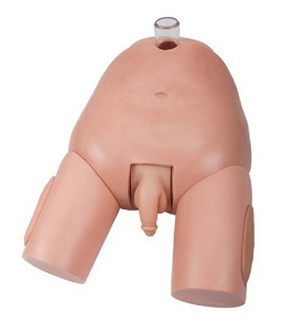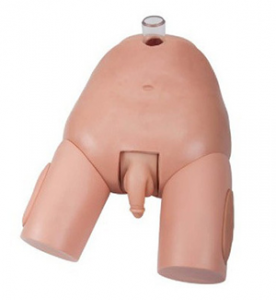In medical training, precise clinical skills training is crucial, especially in areas that require high precision and meticulous manipulation, such as bladder puncture. Bladder puncture is a common medical operation, widely used in urine collection, cystocentesis, catheter placement and other clinical occasions. With the continuous development of medical training, how to provide more authentic and reliable training experience for medical students and medical staff has become an important topic in the field of education.
Advanced Male bladder puncture model: a key tool for simulating real situations
As a new medical training tool, the advanced male bladder puncture model is dedicated to simulating the real clinical bladder puncture operation. The model can not only reproduce the anatomy of the male urethra, but also simulate the morphology and tissue response of the bladder, providing a training experience similar to that of real patients. For medical students, this model is not only a tool to expand theoretical knowledge, but also a training platform for practical ability.

Advanced Male bladder puncture model
Clinical significance: Ensure accurate operation and reduce misoperation
The operation of bladder puncture seems simple, but in fact it involves the accurate grasp of the anatomical structure and the control of the puncture depth, and a little carelessness may lead to clinical risks such as infection and bleeding. By using the advanced Male bladder puncture model, students and medical staff can practice repeatedly in a risk-free environment and become proficient in proper puncture techniques. The design of the model allows the simulation of different clinical scenarios, such as different urethral structures, pathological changes, etc., providing a training "sand table" for clinicians.
According to some academic research data, the use of high simulation training models for skill training can significantly reduce the error rate in actual operation, and help students to be more confident and calm in the face of real patients.
Data support: Improve training effect and shorten learning curve
Many medical training programs have demonstrated the effectiveness of high simulation training models in improving the practical ability of trainees. For example, one study showed that participants who trained using a simulated model experienced a more than 30% increase in their success in real-world clinical operations. At the same time, the operation time of students is also significantly shortened, which indicates that the model can effectively shorten the transition period from theoretical learning to practical operation.
Sum up
In short, the advanced male bladder puncture model can indeed comprehensively simulate the real clinical situation, help medical students and medical personnel to improve the accuracy of operation, reduce the risk of misoperation, and improve the clinical response ability. With the help of this simulation tool, medical staff can better understand and master the technical points of bladder puncture, and lay a solid foundation for the actual clinical operation.

